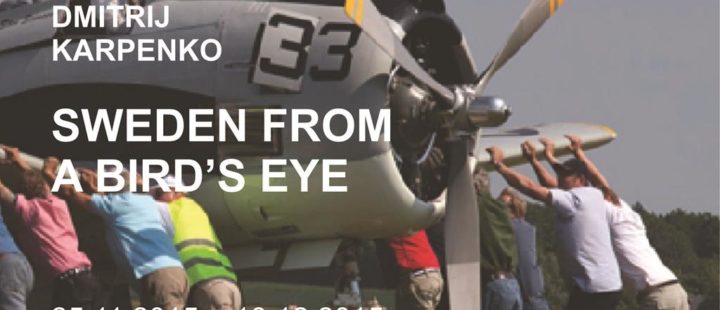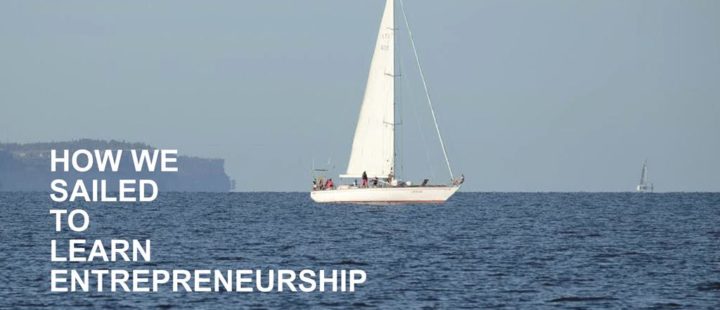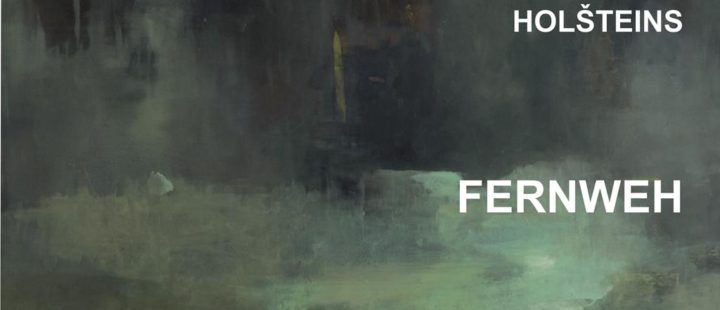Archive
Dmitrij Karpenko Foto exhibition SWEDEN FROM A BIRD’S EYE
- - 13.12.2015
The photo exhibition “Sweden from the Bird’s-Eye View” by the Swedish photographer Dmitrijs Karpenko.
The exhibition shows photos of the Swedish capital Stockholm and the region of Melar Lake. How we sailed to learn entrepreneurship
- - 22.11.2015
This exhibition exposes the experiences, impressions, emotions and lessons learnt during international training SAIL4entrepreneurSHIP that took place from 15 – 27 August in the Baltic Sea and its coast harbours. “LOST IN THE ARCHIVE” The Exhibition of Latvian Contemporary Art Center
- - 15.11.2015
The exhibition “Lost in the Archive” is arranged on the basis of the data base and archive materials of Latvian Contemporary Art Center which is the most extensive information storage on the processes in Latvian contemporary art. In works displayed at the exhibition, the tandems of artists and curators deal with the archive as a significant potential of culture storage, treating it as a carrier of many-sided information which forms and reformulates the relationships with history as well as involves the viewer as an active user of the archive and art work. MONEY The exhibition of the 4th Latgale Graphic Symposium
- - 08.11.2015
The international Latgale Graphic Symposium, being the cooperation project between Daugavpils Mark Rothko Art Center and The Association of Art Teachers Union, is an international communication platform for the professionals from the whole world working in the field of graphic art and meeting in Daugavpils for the 4th time already. Latvian contemporary ceramics
- - 25.09.2015
Latvian contemporary ceramics
Continuing the Latvian contemporary art exhibition cycle started by Daugavpils Mark Rothko Art Center in 2014, this year viewers are offered the opportunity to acquaint themselves with Latvian contemporary ceramics. The choice of ceramics as this year’s art medium is, most likely, a natural occurrence – in 2015 the Daugavpils Ceramics association marks its 35th anniversary from its foundation. Furthermore, Latvian contemporary ceramics exhibition is a continuation of sorts to the view upon development of Latvian ceramic art that was begun this year in Rothko Center by a large-scale exhibition of Ķīpsala Ceramics thus outlining the process of creating contemporary ceramics. The aim of Latvian contemporary ceramics exhibition is to bring into light the significance of ceramics as a contemporary art medium and its place in the Latvian current art and culture scene. Therefore the greatest Latvian ceramic artists were invited to participate in the exhibition. They represent various generations of ceramics overall and have been successful in Latvia as well as are internationally recognized Latvian ceramic artists.
Latvian ceramic artists Sanita Ābelīte, Skuja Braden, Valda Podkalne, Juta Rindina, Ilona Romule and Elīna Titāne, participate in the exhibition. José Manuel Ciria Before the Title, Beyond the Surface
- - 25.09.2015
José Manuel Ciria
Before the Title, Beyond the Surface
I decided to write this text about José Manuel Ciria as the words flashed back to me from memories. As the ideas emerged. In a kind of verbal abstract expressionism. It is totally surreal, because this has nothing to do with his work or the unconscious, nor unconsciousness. Expressing it in legal terms, as it were.
I am sitting in front of a window from which all I can see is the sea. A vast monochrome sea. Dark, with subtle, veiny white crests. There is no land to be seen. The sky is a soft blue and white. This sequential repetition is actually a perfect abstract exercise, however real it may appear at a glance or to superficial interpretation. I am thinking about paintings by José Manuel Ciria, and his Before the Title, Beyond the Surface exhibition. I can find no references to his colour ranges that appear to spring from the bowels of the Earth rather than from the depths of the sea. Reds, blacks, earthy tones, like volcanic rocks. Despite this, I can imagine his pictures floating on the surface. Not adrift, simply lending intensity to the monotonous horizon. I would link this imaginary sequence with one of his painting installations where the pictures were scattered on the cold walls of a museum, in the Abstract Memory series, to be precise. Memory is as abstract as the environment that surrounds me. That is why my visual relationships are as abstract as his pictures. INTERNATIONAL SYMPOSIUM MARK ROTHKO 2015” DAUGAVPILS, 15. – 26.09.2015.
- - 15.09.2015
INTERNATIONAL SYMPOSIUM
MARK ROTHKO 2015”
DAUGAVPILS, 15. – 26.09.2015.
The international symposium “Mark Rothko 2015” is a meeting place for masters of painting in Daugavpils - in the city where Mark Rothko was born. They meet for the eleventh time already to create works of painting to commemorate the master of painting and add to the collection of contemporary painting of Daugavpils Mark Rothko Art Centre.
This year, the closing exhibition of the symposium is seen along with the works by the master of Latvian painting, Valdis Bušs. Often, Matisse is considered Bušs’s predecessor in painting. The artist himself has never denied it too. The “Red Room” by Matisse was the work which attracted attention and left impact on Rothko’s painting as well.
Can we feel the influence of the peculiar atmosphere of Rothko, Matisse and Daugavpils in works created at the 11th International Symposium “Mark Rothko 2015”? Its immediate presence is felt in both oil paintings and acrylic canvases, and in water-color paintings as well, the latter being widely represented this year.
11 artists from 8 countries demonstrate their sensations and mastery at the symposium this year: Michail Lalov (Bulgaria); Siraj Saxena (India); Merav Shinn Ben-Alon (Israel); Alexander Selivanov (Russia); Karīna Korotkova and Sandra Strēle (Latvia); Voldemaras Barakauskas and Dainius Trumpis (Lithuania); Beate Gjersvold (Norway); Monika Falke and Janine Gerber (Germany).
The touch of the brush upon the canvas or paper in Daugavpils has become also a testimony to art history for each artist personally, creating their own biography in art and marking the continuation of a stable tradition for the city of Daugavpils. Rothko Centre has become spiritually richer with a series of wonderful compositions, which embody sensations and impressions, meetings, conversations, Rothko, Daugavpils, Latgale, Latvia… Valdis Bušs What is the Truth?
- - 15.09.2015
Valdis Bušs
What is the Truth?
Through making logical judgments an individual can predict the consequences of one’s own and other people’s actions, building different models of thoughts which depict the real world in the past, present and future. Man always thinks in the language he knows best of all! Is the artist’s language art? What is art?
It seems that the question about what art is has never worried the outstanding landscapist from Latgale, Valdis Bušs, since through the language of his painting as well as through the huge number of his works he has said so much about the past and the present and has aspired towards the realization of the dreams about the future, allowing us to enjoy “struggle”, “power”, “mission” and “idea”, “light”, “game”, “flame” and innumerable “green suns”. Why green, why compositions so greatly contrasting in color?
Is the sun green, or the sky yellow, or the grass white, is the horizon red? And who can assert that they are not? What is the truth? International Ceramic Art Symposium CERAMIC LABORATORY Final Exhibition
- - 28.08.2015
International Ceramic Art Symposium
CERAMIC LABORATORY
Final Exhibition
Traditionally, the International Ceramic Art Symposium CERAMIC LABORATORY ends with the opening of the closing exhibition of the symposium, at which the creative facets of each symposium participant are extensively revealed in the content, form and innumerable experiments.
The symposium assembled well-known ceramists from Egypt, Israel, Poland, Rumania, Latvia, Finland, Spain, Turkey and Ukraine, who have created unique ceramic compositions and by their work have enhanced the development of the processes of contemporary ceramic art.
This time, the artists depict the world’s breath and what they have experienced in this region through different ideas, through frequently dominating stylized and also direct features of fauna and flora, and, naturally, man and things essential for a human as well as ceramic art forms are not neglected either, which all can be interpreted as philosophical touches implemented in a ceramic material.
The exhibition in Daugavpils Mark Rothko Art Center will be on view from August 29 to October 10, 2015. The exhibition is supplemented with photos taken by Tatjana Pedčenko (Ukraine), thereby documenting the process of the symposium.
Since August 29, 2015, the fire sculpture “The Gate” created by Andrejs Sobjaņins (Ukraine) can be seen in the courtyard of the Rothko Center.
Bent Holstein exhibition „FERNWEH”
- - 21.08.2015
Bent Holstein exhibition „FERNWEH"
Bent Holstein uses a German word to describe the main drive in his art: Fernweh. The English translation is Wanderlust, but the combination of the two words is a perfect guide to understanding the art of the 73-year old Danish artist. He constantly wants to be somewhere else and his lust to wander into different places is insatiable. These places must have water or mountains and they must have light. Interesting or dramatic light.
”Why are we always attracted to water? Why do you sail?” he asks and adds ”My art is always coming from somewhere else. My paintings are always painted in my Studio in Copenhagen, but my visions come from The Caribbean, Mexico,. Water is a key element. My best moments are when fishing ”The Flats” in The Florida Keys. The water is a few inches deep. I cannot see the coast. It’s like standing inside a huge soap-bubble. You cannot distinguish water from land – it’s a blurry transition and it fascinates me.” Bent Holstein points at several new paintings, ready for shipment to Latvia and repeats ”They are not naturalistic. I’ll go mad, if I painted nature.”
But he does depict nature. His very own interpretation of natural elements. ”Why does water and mountains fascinate me” he asks and answers his own question immediately ”We Danes are originally lowland farmers. We are strangely attracted to dangerous places like mountains. Both mountains and water demand great respect. There are life-threatening cliffs, ravines, sharks and violent currents. And the difficulties of painting this array of challenges and threats are enormous”. 









